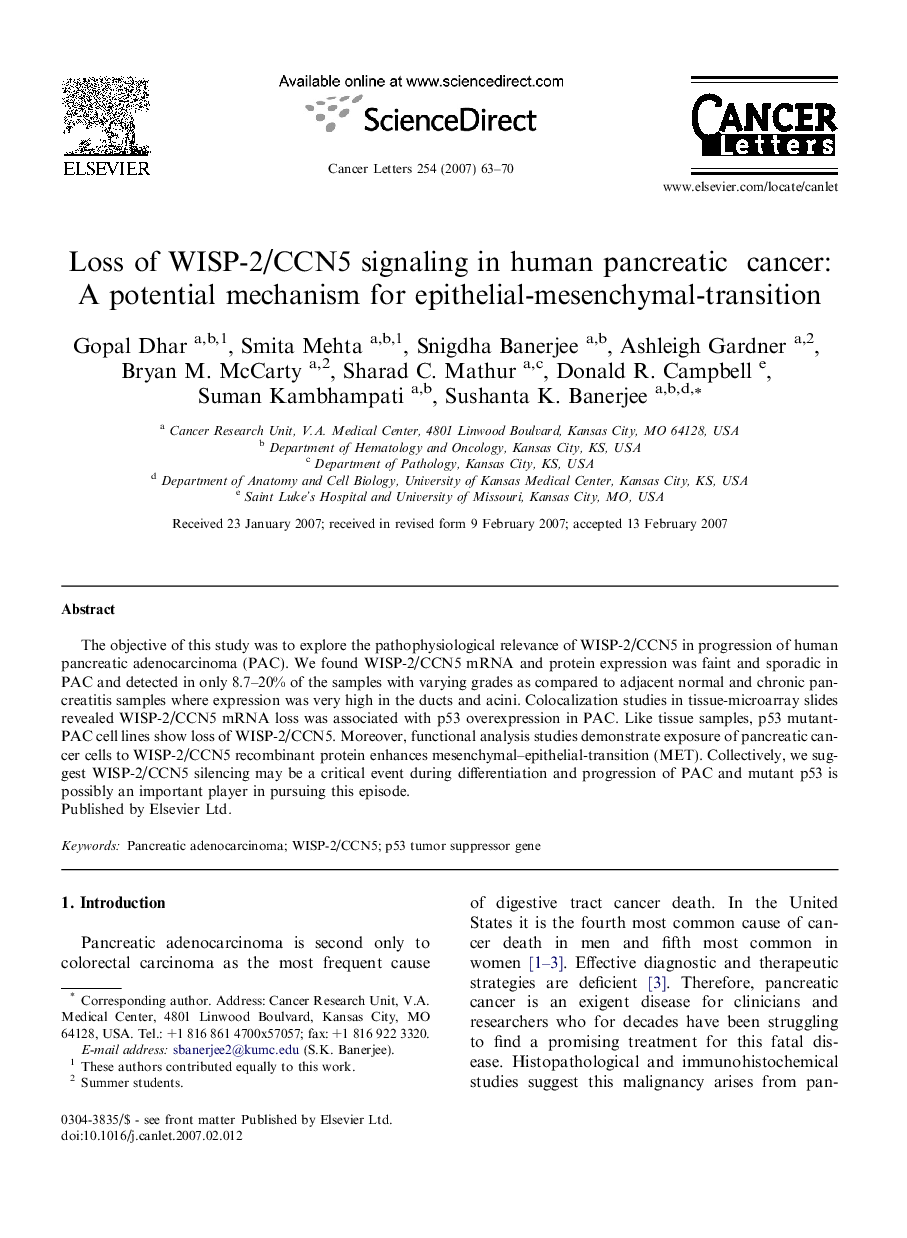| Article ID | Journal | Published Year | Pages | File Type |
|---|---|---|---|---|
| 2116789 | Cancer Letters | 2007 | 8 Pages |
The objective of this study was to explore the pathophysiological relevance of WISP-2/CCN5 in progression of human pancreatic adenocarcinoma (PAC). We found WISP-2/CCN5 mRNA and protein expression was faint and sporadic in PAC and detected in only 8.7–20% of the samples with varying grades as compared to adjacent normal and chronic pancreatitis samples where expression was very high in the ducts and acini. Colocalization studies in tissue-microarray slides revealed WISP-2/CCN5 mRNA loss was associated with p53 overexpression in PAC. Like tissue samples, p53 mutant-PAC cell lines show loss of WISP-2/CCN5. Moreover, functional analysis studies demonstrate exposure of pancreatic cancer cells to WISP-2/CCN5 recombinant protein enhances mesenchymal–epithelial-transition (MET). Collectively, we suggest WISP-2/CCN5 silencing may be a critical event during differentiation and progression of PAC and mutant p53 is possibly an important player in pursuing this episode.
